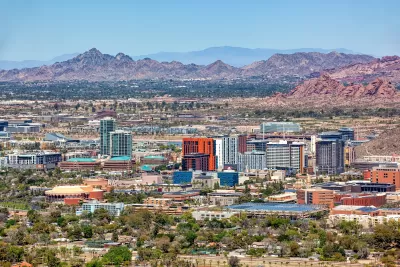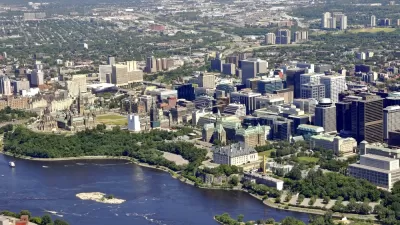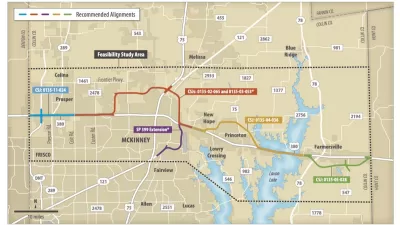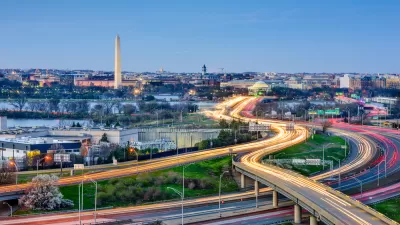Tempe planners are preparing a General Plan update scheduled for voter approval in March 2024.

Tempe, Arizona is expecting to grow in population by 38% by 2060—from 167,400 residents in 2022 to 269,700. Neighboring cities are expecting similar rates of growth of the time period, too, with Neighboring cities show projected increases as well, with Phoenix expecting a 28% increase Mesa increasing by 18%.
Those population estimates figure prominently in Tempe’s ongoing General Plan update process. Voters are expected to consider the Tempe Tomorrow: General Plan 2050 in March 2040.
A paywalled article by Caroline Yu for the Daily Independent documents some of the big issues at play for the General Plan process, including the aforementioned population growth, as well as transportation projects, economic resilience, and water conservation.
Here is a sample of Yu’s report on these issues:
- On transportation: “But City Traffic Engineer Cathy Hollow says it’s difficult to give an exact answer about how transportation will evolve over the next 30 years, especially as the city just begins to update its transportation plan to guide the city’s transportation projects.”
- On economic resilience: “Anticipating an increase in its workforce and general population, Tempe doesn’t expect to have issues with residents finding jobs. Still, its continued struggle with housing could prevent people from living and working in the city.”
- On water conservation: “Going forward, the city is investing millions into water resources and infrastructure along with making the most of its existing water portfolio. It’s also in the process of rehabilitating the Kyrene Water Reclamation Plant to increase the reuse of reclaimed water.”
FULL STORY: Tempe’s collaborative plan for a growing population

Alabama: Trump Terminates Settlements for Black Communities Harmed By Raw Sewage
Trump deemed the landmark civil rights agreement “illegal DEI and environmental justice policy.”

Planetizen Federal Action Tracker
A weekly monitor of how Trump’s orders and actions are impacting planners and planning in America.

The 120 Year Old Tiny Home Villages That Sheltered San Francisco’s Earthquake Refugees
More than a century ago, San Francisco mobilized to house thousands of residents displaced by the 1906 earthquake. Could their strategy offer a model for the present?

LA’s Tree Emergency Goes Beyond Vandalism
After a vandal destroyed dozens of downtown LA trees, Mayor Karen Bass vowed to replace them. Days later, she slashed the city’s tree budget.

Sacramento Leads Nation With Bus-Mounted Bike Lane Enforcement Cameras
The city is the first to use its bus-mounted traffic enforcement system to cite drivers who park or drive in bike lanes.

Seattle Voters Approve Social Housing Referendum
Voters approved a corporate tax to fund the city’s housing authority despite an opposition campaign funded by Amazon and Microsoft.
Urban Design for Planners 1: Software Tools
This six-course series explores essential urban design concepts using open source software and equips planners with the tools they need to participate fully in the urban design process.
Planning for Universal Design
Learn the tools for implementing Universal Design in planning regulations.
Ada County Highway District
Clanton & Associates, Inc.
Jessamine County Fiscal Court
Institute for Housing and Urban Development Studies (IHS)
City of Grandview
Harvard GSD Executive Education
Toledo-Lucas County Plan Commissions
Salt Lake City
NYU Wagner Graduate School of Public Service





























